How to grow farbitis on your site. Types and use of farbitis
Farbitis belongs to the bindweed family, and more recently it had a different name - morning glory. This plant has many shoots and can cover a large area with a carpet. But most often, farbitis is used as an encircling ornamental plant. It is planted near fences, gazebos and windows, on balconies, to create a thick shade.
Content:
Types of farbitis
Every day, morning glory flowers are one of the first to open and during the day they turn to follow the sun, and in the evening they fold back into beautiful buds. Previously, species with blue and pink flowers were often found, but recently, breeders have bred many varieties with various colors and shapes of flowers and leaves. It is found on almost all continents, but in places where the seasons change and there are annual frosts, only annuals grow.
For perennial varieties, a constant temperature above 15 degrees is required.
There are many types that are used in horticulture. There are about 400 of them. One part is annual vines, sowing of such plants occurs annually, and perennials that curl beautifully and do not require annual planting.
Farbitis purple:
- This annual species reaches 3 meters in height.
- The leaves are ovoid and pointed at the ends.
- Flowers are arranged on a peduncle in 2-5 pieces. Their shape is funnel-shaped, the color is purple, pink, red, white, dark purple.
- This species has several varieties, the flowers of which are double.
- The purple farbitis blooms very densely, and the period lasts from mid-summer to the first autumn frosts.
- The fruits ripen in early autumn. They are box-shaped and contain 2–4 seeds.
Ivy Farbitis:
- Homeland is tropical America.
- Ivy-shaped Farbitis grows up to 3 meters in height and is highly branched.
- In this species, the leaves consist of three lobes and have a green tone, outwardly resembling ivy leaves.
- The flowers are large, funnel-shaped and colored in blue.
- Peduncles are long and each has 2-3 buds.
- Varieties have been bred that are blue or purple in color, with a white border.
- Farbitis ivy is an annual.
Farbitis red-blue:
- The plant can be like an annual, and perennial.
- Numerous branches can reach a height of up to 5 m.
- Flowers of this species differ in their size, which can reach 10 cm in diameter.
- This species is called so, because during flowering it has a blue color of flowers, and during the flowering period it acquires a lilac-red tone.
- Grows well in the southern regions.
- This species has varieties that bloom in late spring or early summer.
Farbitis moonflower:
- The homeland of this species is tropical America.
- The herbaceous plant grows up to 3 m in height and has many branches.
- The leaves are dark green in color, heart-shaped; at the tops of the branches, the leaves consist of three lobes.
- They are located very densely and create a dense carpet.
- Farbitis grows quickly and is gaining foliage at the same rate.
- Therefore, it is necessary to ensure that the plant has supports to which the branches can cling.
- The flowers are for some time in a beautiful bud, shaped like a closed cane umbrella. But at a certain moment, the bud instantly opens and very often this process can be observed.
- Also, this type of farbitis emits a pleasant aroma during flowering.
- The flowering period is from mid-summer to the first frost.
Paddle farbitis:
- Lobed farbitis differs in many ways from the usual appearance of other varieties of farbitis.
- Its homeland is Southern Mexico. Lobed farbitis is an annual plant, the branches of which are reddish in color and slightly twisted.
- They can grow up to 3 meters in height.
- Green leaves are heart-shaped and have three lobes, and there are three small stipules near each leaf.
- The flowers are located on long spike-shaped inflorescences. Each flower can reach a length of 2 cm and resemble a drop in appearance.
- On one inflorescence, the flowers constantly change their color as the spike grows, from red on top of the spike to beige at the bottom.
Farbitis nil:
- Homeland is the tropical zone of Japan.
- This species is considered an annual, although it can grow for a longer period.
- In farbitis nil, branches grow much faster than in other species.
- They can reach a height of 3 meters.
- Green and dark green leaves are arranged on long petioles and are heart-shaped.
- The flowers are large in size, painted in red, pink, purple, lavender and dark blue with an always white center.
- The opened flower lives for one day, and then it closes and fades.
- Flowering begins in July and lasts until late autumn.
- This species has many different varieties that were bred by Japanese breeders.
Plant care
Farbitis or morning glory is very easy to grow and care for, however, it is not so often found in summer cottages and in gardens. It is suitable not only for landscaping fences, balconies, but also for landscape design.
The plant is unpretentious, but does not tolerate an excess of moisture in the soil:
- Therefore, when watering, it is worth monitoring the process of plant moisture.
- Due to the fact that the leaves create a dense cover that practically does not let the sun through, moisture under the bush lingers longer.
- Therefore, it is worth watering only as the soil dries up.
- It is also worth being careful to feeding the plant.
- With an overabundance of organic matter, the farbitis will grow and branch well, the density of the leaves will also increase, but the flowering will become scarce and rare.
Reproduction of farbitis
Morning glory is easily grown from seed:
- To do this, you need to take a small container or a pot with a large diameter, with the expectation that it will contain not only a plant, but also a support for it. Can be grown in the sun or shade.
- Before sowing, the seeds must be soaked for a day.
- If the seeds are sown in open ground, then it is necessary to wait for the last frost.
- A good drainage layer is poured into the container at the bottom, and fertile soil is poured on top of it, into which the seeds are planted.
- Farbitis-morning glory is a fast-growing plant, therefore, the process of strengthening and timely garter is constantly taking place.
Also, if the seeds have sprouted too densely, then the extra seedlings are removed, leaving 10-15 cm between adjacent shoots. When growing this plant on the balcony, it is necessary to build additional supports. Bamboo sticks are perfect for this. Farbitis will wrap around them with its dense branches and will stretch up, and not cover the entire territory of the balcony.
When planting in open ground, it is advisable to choose a place with loose soil containing lime.
May is a good time to sow. You can also sow seedlings in pots for open ground. Such sprouts are planted along with a clod of earth. For such a landing it is better to choose a warm periodfor example mid or late June.
Farbitis can also be propagated by cuttings or by dividing the rhizome, but such propagation is only suitable for perennials that grow only in warm countries.
The use of farbitis
Farbitis or morning glory is often used in landscape design for vertical gardening. It can also be used as a ground cover plant. Morning glory grows rapidly and branches strongly, and densely spaced leaves completely cover the soil.
Farbitis can be easily combined with many plants, especially if planted near an arch or some other support.
At home, it is often used as a shade plant. Having planted it near the gazebo, veranda or terrace and correctly distributing the shoots, the plant will create shade for the whole summer. And flowers, the daily blooming of which does not stop all summer and autumn, will decorate the place of growth. And many varieties will also be fragrant, exuding wonderful aromas.
More information can be found in the video.



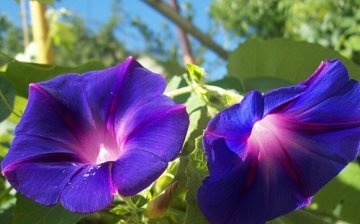
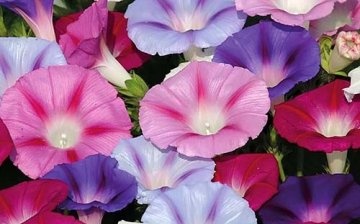
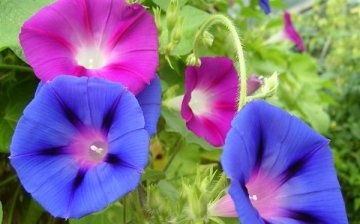

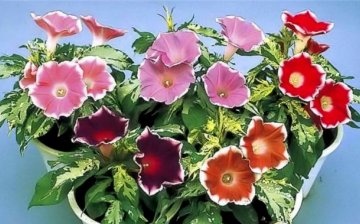
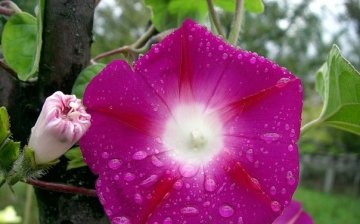
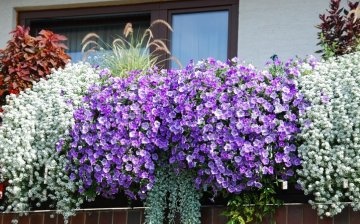







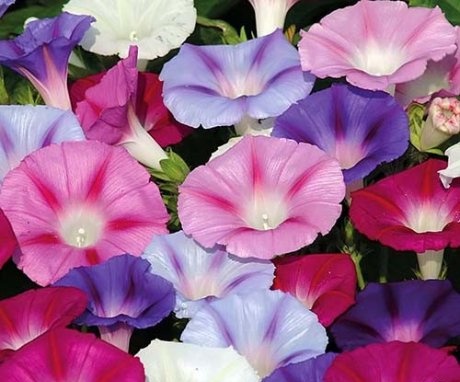
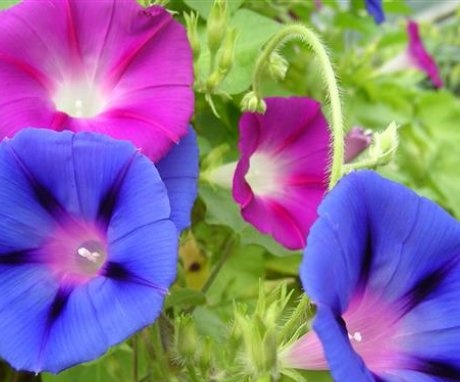
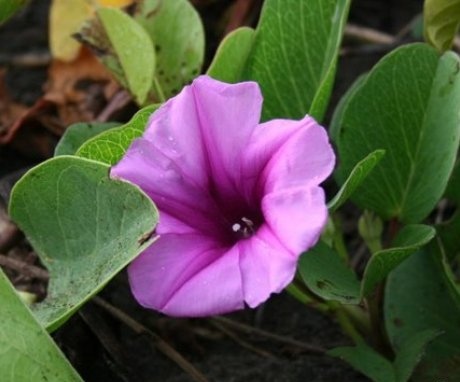
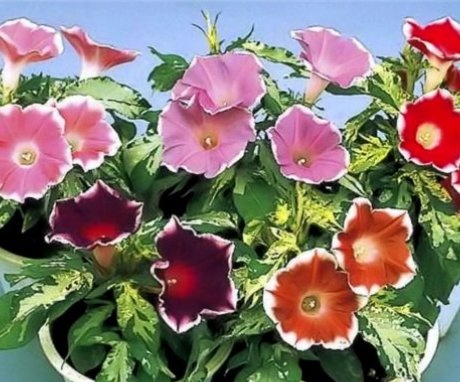
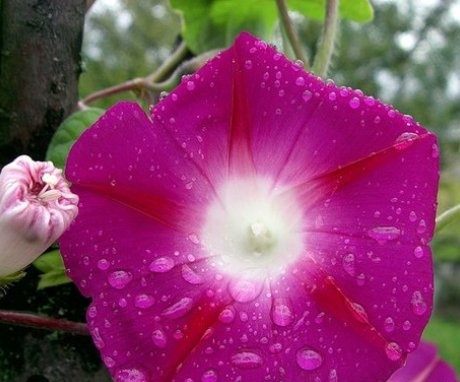
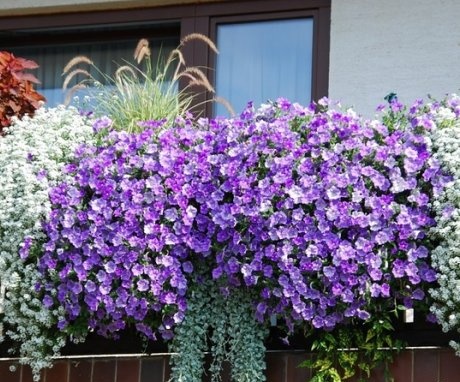
I love the farbitis, which weaves a lot. At my dacha, the entire fence is entwined with it, when it blooms in the morning - it looks amazing.
I know Farbitis more as a morning glory, I adore its Blue Star variety. Its morning flowering is so abundant, of such a rich blue color that it is impossible to take your eyes off this beauty. the only pity is that on a sunny day the flowers close quickly.